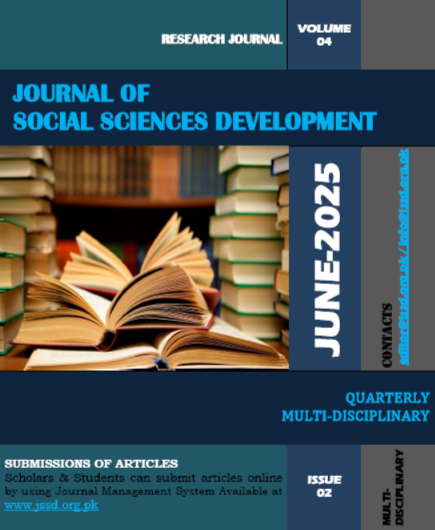MAPPING COMMUNITY LEVEL VULNERABILITY TO EXTREME CLIMATE EVENTS IN PESHAWAR AND REVIEWING FLOOD MITIGATION EFFORTS
DOI:
https://doi.org/10.53664/JSSD/04-02-2025-03-27-38Abstract
Peshawar, a rapidly urbanizing city in northwestern Pakistan, has become increasingly susceptible to extreme climate events, particularly seasonal flooding due to erratic rainfall patterns, weak governance, and unchecked development along flood-prone corridors. This study maps the community-level flood vulnerability from 2010 to 2022 and critically evaluates the effectiveness of structural & non-structural mitigation strategies executed by relevant authorities. Utilizing a mixed-methods approach, the research integrates climatological data from Pakistan Meteorological Department, Geographic Information System (GIS)-based flood mapping, and field-level insights from stakeholder interviews and community surveys. The findings reveal that 24 union councils are consistently exposed to high flood risks due to their proximity to rivers, seasonal poor drainage infrastructure, and informal settlements. Although structural measures, such as embankments and drainage rehabilitation, exist, their impact is undermined by frequent encroachments, limited maintenance, and a lack of coordination among the municipal, irrigation, and disaster management bodies. This research offers vital recommendations to support sustainable flood resilience and adaptive governance in Peshawar.
Downloads
Details
-
Abstract Views: 133
PDF Downloads: 86





